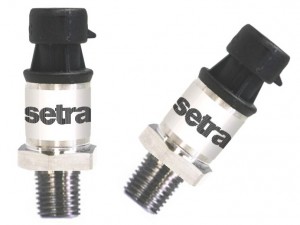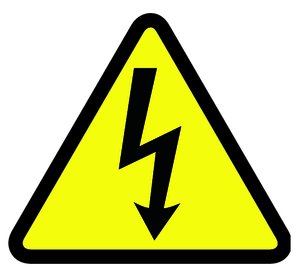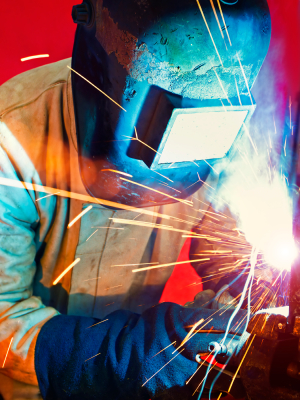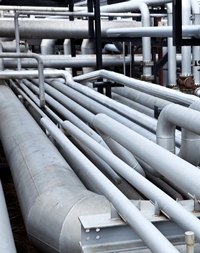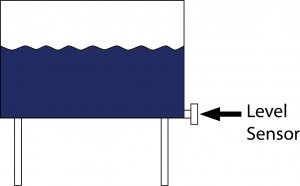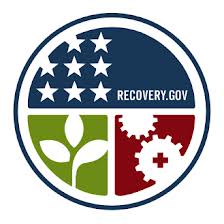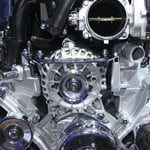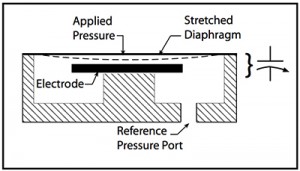Here at Setra we realize that each customer is unique and every application has different requirements that necessitate different features in a pressure sensor. We have the best interests of the customer in mind and realize we may not have the best sensor for a particular situation.
Setra Blog
NOW AVAILABLE
Setra Model 3550 - Compact Low Pressure OEM Pressure Transducers
The 3550 is perfect for OEMs that need consistent high levels of performance, reliability and stability because of the units small package size with all 316L stainless steel wetted parts at an unbeatable price performance ratio. A wide choice of electrical outputs as well as both electrical and pressure connections means the unit is suitable for most applications without modifications.
Shock & vibration are two potential mechanical problems for pressure transducers.
Shock is a sudden, unexpected impact that transmits energy to a device in a relatively short time interval. For a pressure transducer, that energy passes through the stainless steel up through the housing. Shock may originate from rough transportation and handling, such as by trucks, forklifts and conveyors. Alternately, shock can be caused simply by dropping the transducer on the shop floor or by an assembler slamming a cabinet door adjacent to it. A transducer may not be damaged by a single shock, but can experience fatigue failure with numerous low-level shocks over the course of its life.
Excessively high temperatures are a common source of pressure transducer difficulties.
Like most other electronic equipment, pressure transducers are effected by temperature, shock and vibrations. They consist of numerous components that only function within specified temperature ranges. Transducers exposed to temperatures exceeding those ranges during the assembly process can be adversely affected.
Why are industry leaders using remote sensors?
Wet-to-wet differential pressure transducers have undergone several significant design and technological improvements recently. The most dramatic of which is the ability to install these units with remote sensors, rather than with traditional embedded sensing elements. A contractor can now easily install remote sensors directly into the pipes while an electrician makes electrical connections between the remote sensors and the transducer via cables or conduit. For industrial applications, contractors can order plumbing-ready cable versions with up to 30 feet of cable. When the local electrical code requires conduit, typically for projects like schools or municipal buildings, contractors can order units in the conduit version.
After reviewing the top 5 product considerations (pressure, media, temperature, and environment) in which the pressure transducer will be installed, it’s time to look at transducer construction, circuit design and the pressure transducer manufacturer's supply chain.
Liquid Level
The pressure measured at the bottom of a liquid filled tank is proportional to both the height (head) and density of the liquid. For best results the pressure should be sensed by a pressure transmitter mounted at the lowest point possible on the tank, as shown in Figure 1.
On the heels of an economic crisis, the President of the United States signed the American Recovery & Reinvestment Act (ARRA) in 2009 with the goal of:
Capacitive pressure transducers have earned a reputation for consistently high accuracy and unmatched long-term stability. These sensors find broad application in areas where characteristics rate from important to vital. A few of these include:
Capacitance based pressure transducers provide many benefits over other technologies. 8 features that should be considered when choosing a pressure transducer are accuracy, minimal mechanical motion, range capabilities, long term stability, high-level output, media compatibility, electromagnetic compatibility and resistant to harsh environments..
Subscribe to Our Blog!
Topics
- Critical Environments (182)
- HVAC/R (179)
- General Industrial (153)
- Building Automation (134)
- General Industrial OEM (92)
- Energy Management (85)
- Test and Measurement (66)
- HVAC/R OEM (58)
- Barometric (44)
- Alternative Fuels (42)
- Medical (40)
- Process/Mfg Tank Level (40)
- Water and Wastewater (39)
- OHV (38)
- Oil and Gas (35)
- Industrial Vacuum (29)
- Calibration (25)
- Semiconductor (25)
- Particle Counting (20)
- Cleanroom Monitoring (17)
- Room Pressure Monitoring (16)
- Trade Show (12)
- cleanroom environment (12)
- Scales (11)
- Environmental Monitoring (10)
- Power Monitoring (10)
- Healthcare (9)
- Power Meters (9)
- Software (9)
- cleanroom monitoring systems (9)
- Case Study (8)
- critical environment technologies (8)
- data centers (8)
- Humidity (7)
- particle counter (6)
- pressure transducers (6)
- LITE room pressure monitor (5)
- hardware and software cleanroom monitoring systems (5)
- setra lite (5)
- Compliance (3)
- Video (3)
- hospital spaces (3)
- FAQ & Troubleshooting (2)
- Monitoring Compounding Pharmacies (2)
- Semiconductor Manufacturing (2)
- agencies that monitor pharmacies (2)
- energy (2)
- hvac (2)
- laboratories (2)
- monitor compound pharmacy (2)
- protected environment (2)
- regulatory compliance (2)
- setra lite features (2)
- usp 797 (2)
- Current Sensors and Transducers (1)
- Current Transformers (1)
- Lithium-Ion Battery (1)
- Pressure (1)
- aerospace cleanrooms (1)
- cems (1)
- digital transformation (1)
- ipv6 multicast (1)
- ipv6 multicast address (1)
- ipv6 multicast address range (1)
- isolation room pressure monitoring (1)
- multicast address ipv6 (1)
- multicast ipv6 (1)
- operating room (1)
- pharma 4.0 (1)
- pressure sensor (1)
- pressure transducer companies (1)
- semi conductor (1)
- sensors and transducers (1)
- setra pressure transducers (1)
- submetering (1)
- sustainability (1)
- temperature monitor (1)
- temperature monitoring for pharmacies (1)
- transducers (1)
- usp 800 (1)
- water (1)
- what does hvac stand for (1)
- what is a transducer (1)
- what is hvac (1)


